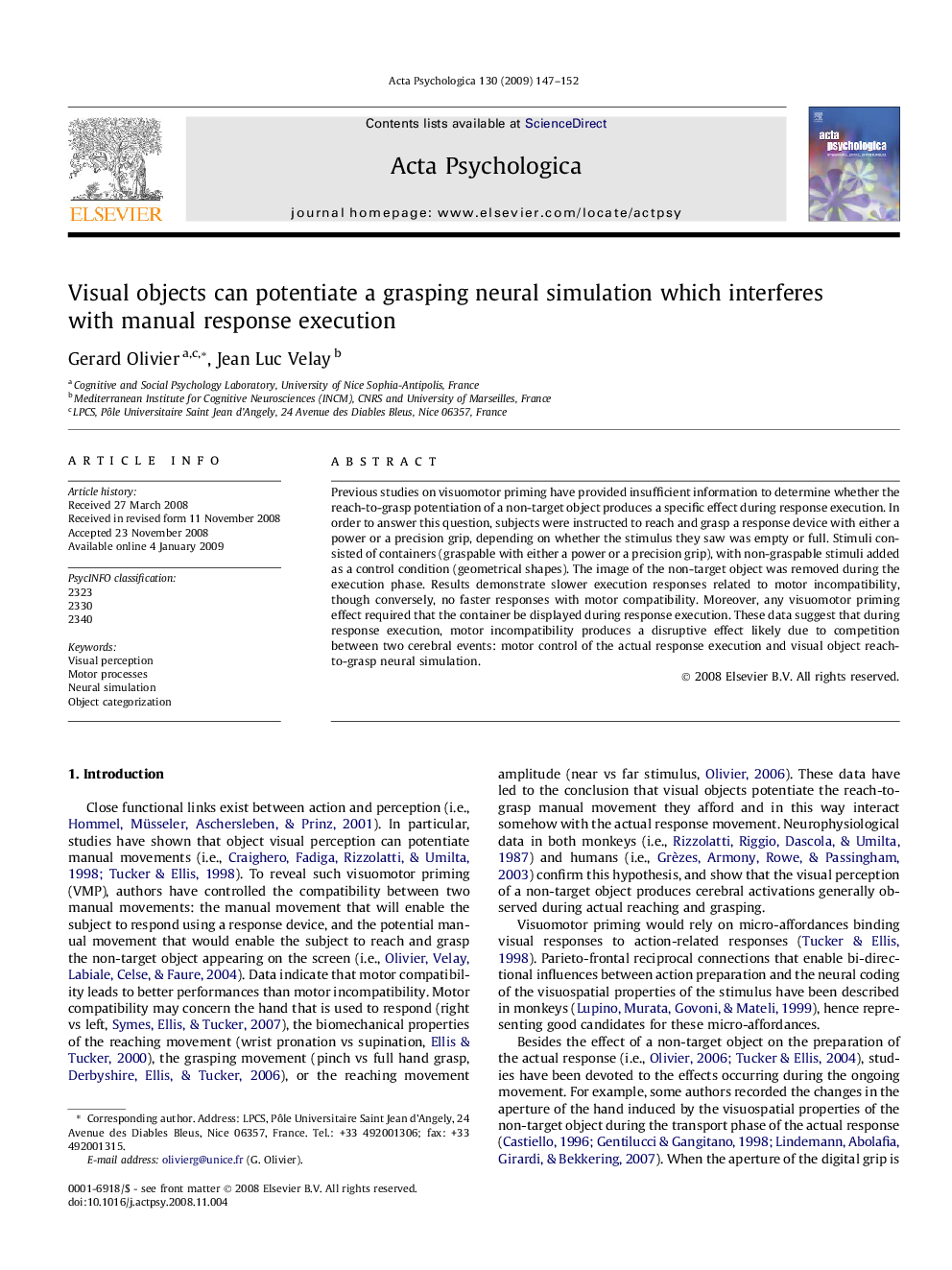| Article ID | Journal | Published Year | Pages | File Type |
|---|---|---|---|---|
| 920355 | Acta Psychologica | 2009 | 6 Pages |
Abstract
Previous studies on visuomotor priming have provided insufficient information to determine whether the reach-to-grasp potentiation of a non-target object produces a specific effect during response execution. In order to answer this question, subjects were instructed to reach and grasp a response device with either a power or a precision grip, depending on whether the stimulus they saw was empty or full. Stimuli consisted of containers (graspable with either a power or a precision grip), with non-graspable stimuli added as a control condition (geometrical shapes). The image of the non-target object was removed during the execution phase. Results demonstrate slower execution responses related to motor incompatibility, though conversely, no faster responses with motor compatibility. Moreover, any visuomotor priming effect required that the container be displayed during response execution. These data suggest that during response execution, motor incompatibility produces a disruptive effect likely due to competition between two cerebral events: motor control of the actual response execution and visual object reach-to-grasp neural simulation.
Related Topics
Life Sciences
Neuroscience
Cognitive Neuroscience
Authors
Gerard Olivier, Jean Luc Velay,
